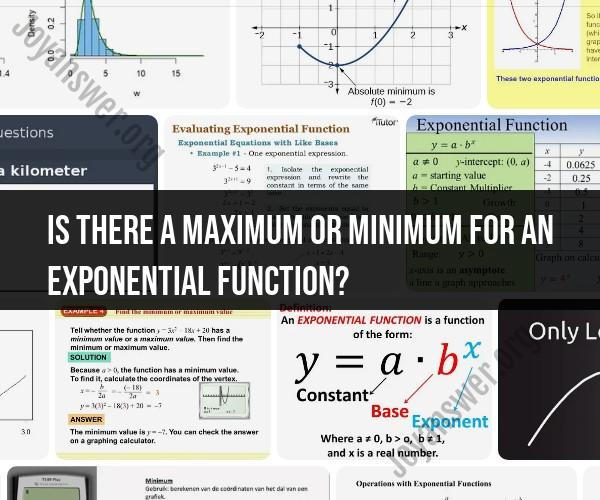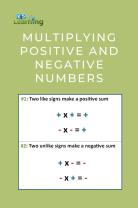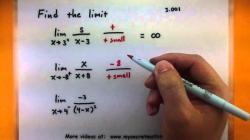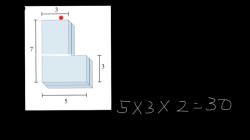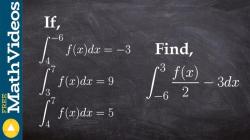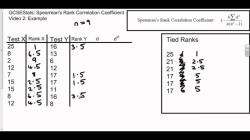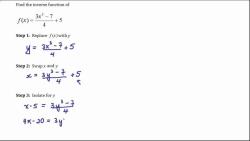Is there a maximum or minimum for an exponential function?
Exponential functions of the form , where and are constants, do not have a maximum or minimum value when considering the entire real number line. They have an asymptote at the x-axis (y = 0), which means the function approaches but never reaches y = 0 as goes to positive or negative infinity.
However, depending on the specific parameters and the context in which the exponential function is used, it's possible to have local maximum or minimum values within a certain range of . These local extrema occur when the exponential function changes from increasing to decreasing (local maximum) or from decreasing to increasing (local minimum) within a particular interval.
For example, if you have an exponential growth function like , it will continuously increase as increases. There is no global maximum or minimum value for the entire real number line because the function continues to grow without bound as becomes more positive or more negative. However, if you consider a restricted interval, such as , you can find local extrema within that interval.
To find local extrema in a restricted interval, you can use calculus techniques like finding critical points and applying the first or second derivative test. These methods help identify where the function changes from increasing to decreasing or vice versa.
In summary, exponential functions do not have global maximum or minimum values over the entire real number line, but they can have local extrema within specific intervals. The presence of local extrema depends on the characteristics of the specific exponential function and the range of interest.
The Extremes of Exponential Functions: Maximums and Minimums
Exponential functions are mathematical functions that grow or decay at an increasingly rapid rate. They are often used to model real-world phenomena that change over time, such as population growth, bacterial growth, and the spread of diseases.
Exponential functions can have maximums and minimums. A maximum is a point on the function where the y-value is greater than the y-value of any other point on the function. A minimum is a point on the function where the y-value is less than the y-value of any other point on the function.
Exponential Functions: Investigating Their Maximum and Minimum Points
To find the maximum and minimum points of an exponential function, we can use calculus. Calculus is a branch of mathematics that deals with rates of change.
To find the maximum and minimum points of an exponential function, we first need to find the derivative of the function. The derivative of a function is a measure of how the function changes as the input variable changes.
Once we have found the derivative of the function, we can set it equal to zero and solve for the input values. The input values that make the derivative equal to zero are called critical points.
The critical points of an exponential function can be maximums, minimums, or neither. To determine whether a critical point is a maximum or a minimum, we need to look at the second derivative of the function. The second derivative of a function is a measure of how the rate of change of the function changes as the input variable changes.
If the second derivative of the function is positive at a critical point, then the critical point is a minimum. If the second derivative of the function is negative at a critical point, then the critical point is a maximum.
Peaks and Troughs: Analyzing Extremes in Exponential Functions
The extremes of an exponential function are often referred to as peaks and troughs. A peak is a maximum point on the function, and a trough is a minimum point on the function.
The peaks and troughs of an exponential function can be used to model real-world phenomena that have a threshold. A threshold is a point at which a phenomenon changes rapidly. For example, the threshold for the spread of a disease is the point at which the number of infected people becomes large enough to sustain the spread of the disease without any new contact between infected and susceptible people.
We can use the peaks and troughs of an exponential function to model the spread of a disease by plotting the number of infected people over time. The peak will represent the point in time at which the number of infected people is the highest. The trough will represent the point in time at which the number of infected people is the lowest.
By understanding the peaks and troughs of exponential functions, we can gain a deeper understanding of the world around us and make better decisions.
Conclusion
Exponential functions are powerful tools that can be used to model a wide variety of real-world phenomena. By understanding the extremes of exponential functions, we can gain a deeper understanding of the world around us and make better decisions.
